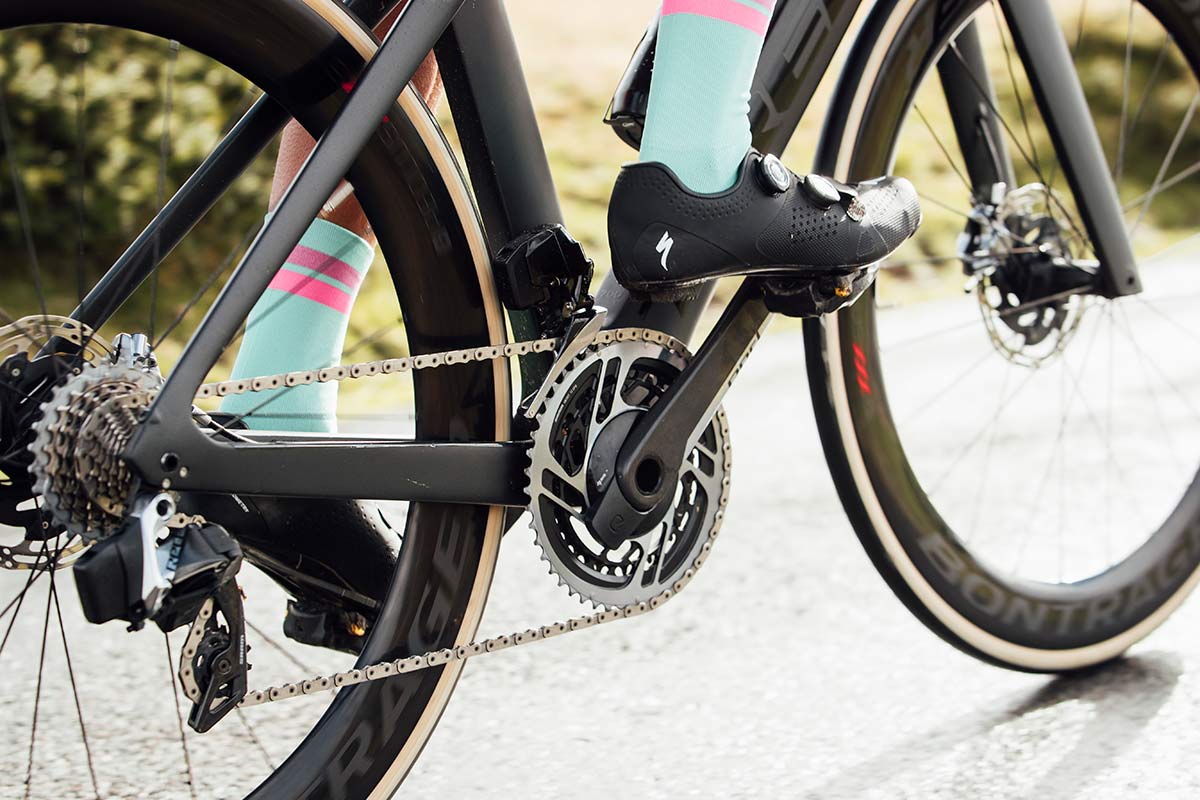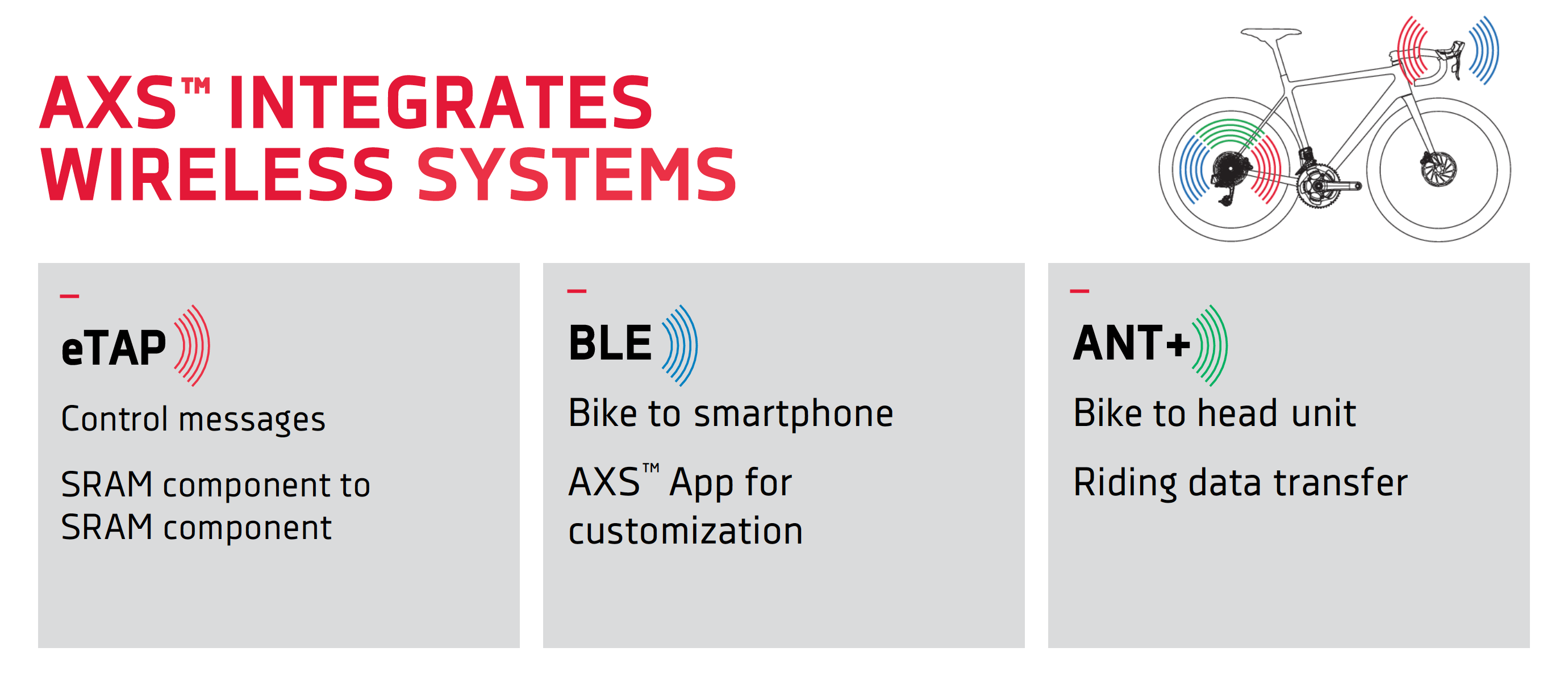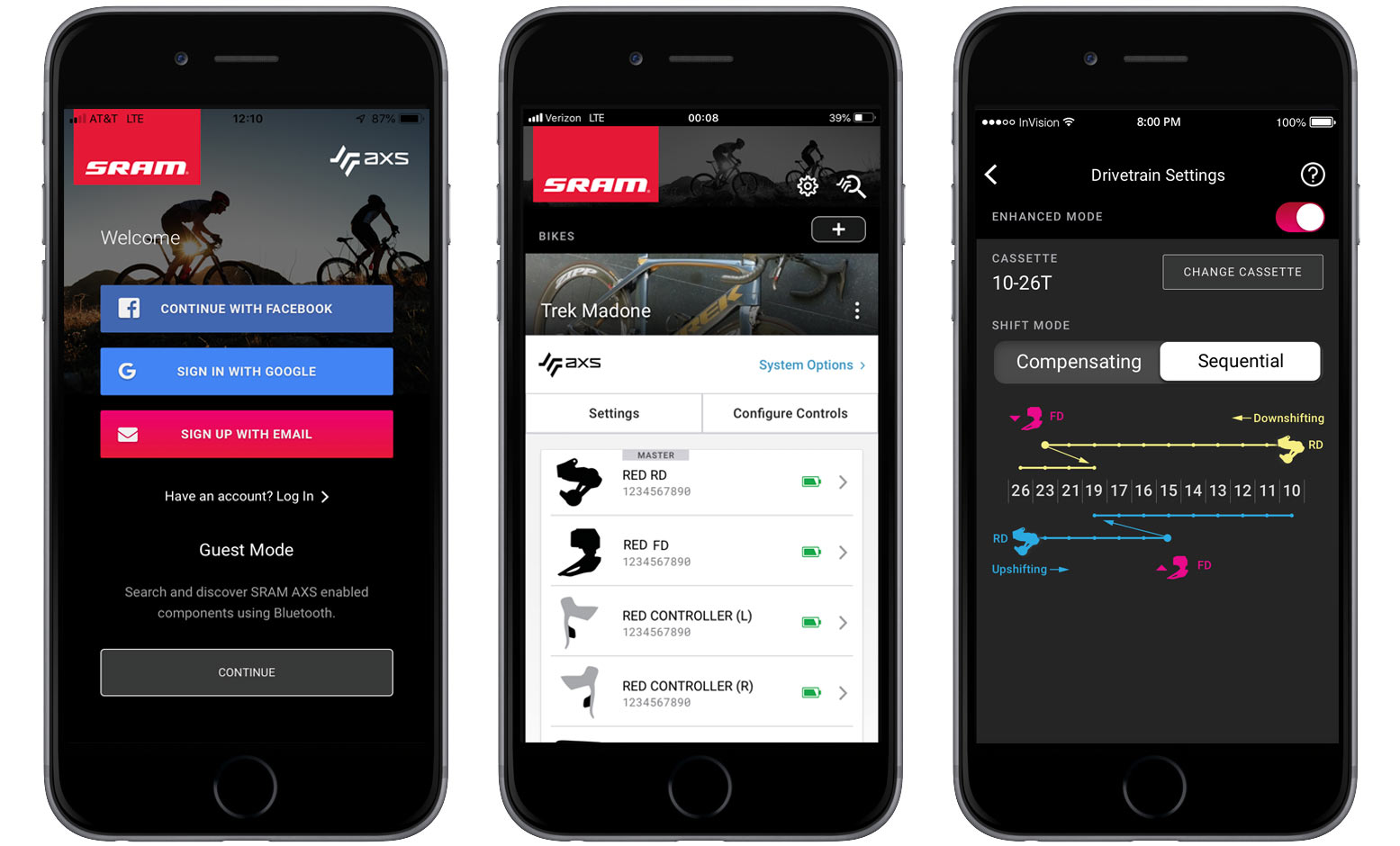The new SRAM AXS family launches today with an all-new RED eTap AXS 12-speed group, the new Eagle AXS wireless mountain bike shifting, a Rockshox Reverb AXS with wireless remote, and an app that ties it all together. It’s a comprehensive relaunch and massive upgrade of the original eTap concept, and it’s the future of their top-tier bicycle components across all of their brands. We’re covering each of the new groups and products separately. Here, we’ll cover the AXS concept that will define future product development at SRAM.
AXS the future
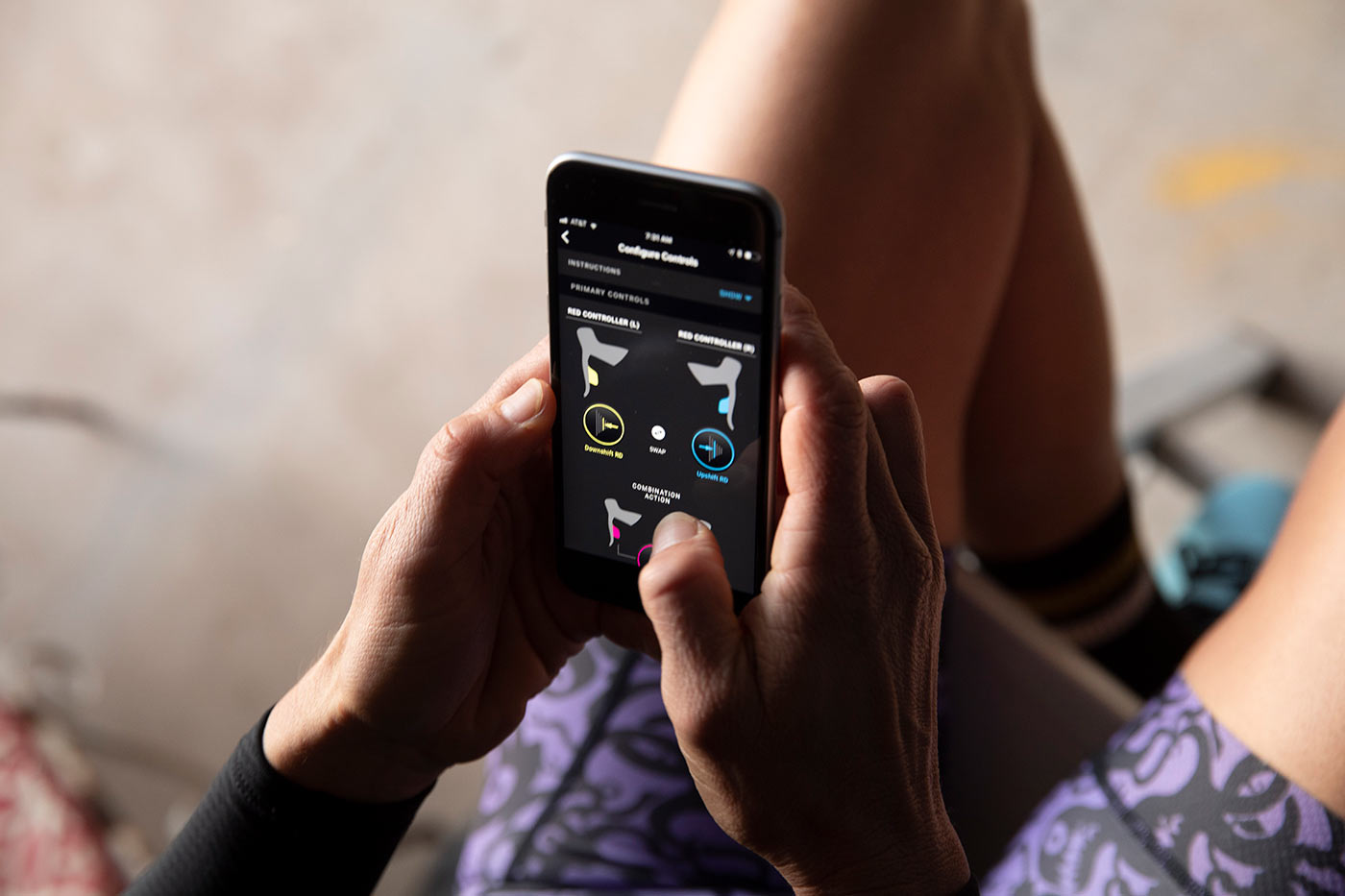
Internally, SRAM’s stated goal is to be the leader in connected components. When they first started down the path of electronic drivetrains, they quickly realized how much they didn’t know. But they saw the potential. They saw a lot of opportunities to connect different components on a bike to make things work in new and better ways.
They actually started working on electronic shifting for mountain bikes more than 5 years ago. Then the Eagle project came along and pulled most of their attention away for a bit. Which was a good thing for them, because by some estimates they now own more than 70% of the OEM market for MTB drivetrains. But they worked on it when they could, then dove back in full speed once the Eagle family was complete.
But it grew. They saw electronics as a way to control more things. Like their Reverb dropper seatpost, which means no more cables and hoses, and drastically fewer frame restrictions for routing those cables and hoses. It’s likely they also saw what the competition was doing and knew they had to be better. That meant quicker response times, improved ergonomics and controls, and unquestionable reliability. The last thing they want is something to fail or suffer another recall.
So, all hands were called on deck, pulling people from every office and every department. They have eight distinct offices around the world (five in the US, plus Portugal, Germany and Taiwan), and all of them were involved.
So, what is SRAM eTap AXS?

Technically, it’s just AXS. The “eTap” moniker refers only to electronic road shifting. AXS (pronounced as “access”) describes the wireless protocol that will unite components from drivetrain, suspension and potentially power, wheels and more in the future. Anything that’s labeled AXS will work together, so you can mix and match road and mountain bike AXS parts to create whatever type of bike you want.
AXS is there to let the rider do three things: Control, personalize and monitor the performance of their bikes.
The “control” part is, well, the controls. They give you shifting and dropper seatpost controls without cables, wires, hoses, friction or maintenance. The “personalize” part is that you can customize the controls to work the way you want. There are a lot of options, but the app has built in protections to keep you from creating a button arrangement that won’t let you do important things. Like, you know, shift.
It stitches together three different communication methods to tie everything together. Like the original eTap, it uses their proprietary AIREA communication protocol for the shifters, derailleurs and now droppers to communicate with each other in a way that can’t be hacked.
They added standard Bluetooth to let the system pair with the AXS smartphone app so you can customize the settings, and have the system update the app with your shift data and ride time. This last bit allows it to provide service reminders and other maintenance, which is where the “monitor” part comes in. Bluetooth is a new feature for the AXS group, the original eTap didn’t have Bluetooth, so, unfortunately, you can’t use the app with the first generation eTap group.
Lastly, it has ANT+ so it can talk with modern cycling computers to show gear selection…for both road and mountain bike groups.
What does the SRAM AXS app do?
The SRAM AXS app (iOS, Android) gives you complete control of how your group operates. But first, it’s important to note: You never actually HAVE to use the app. You can unbox the group, mount it and pair the shifters to the derailleurs and never need to download the app. They didn’t want your ability to ride your bike dependent on an app or having cellular data. And you don’t have to use it often. The components on the bike store their shift counts, rotations, etc., and the app simply sees that number whenever it’s connected and uses that data to suggest service recommendations.
Assuming you do download it and register, app data is saved to your account so that if you switch phones, all of your settings will immediately show up on your app as soon as you sign in. Or don’t register…just use Guest Mode and you’ll be a ghost.
As for data, the app is only recording operating time and shifting time, plus crank rotations if you have the power meter, but not mileage, location or other potentially personally identifying data. They’re not using or selling your data for anything else.
Inside the App
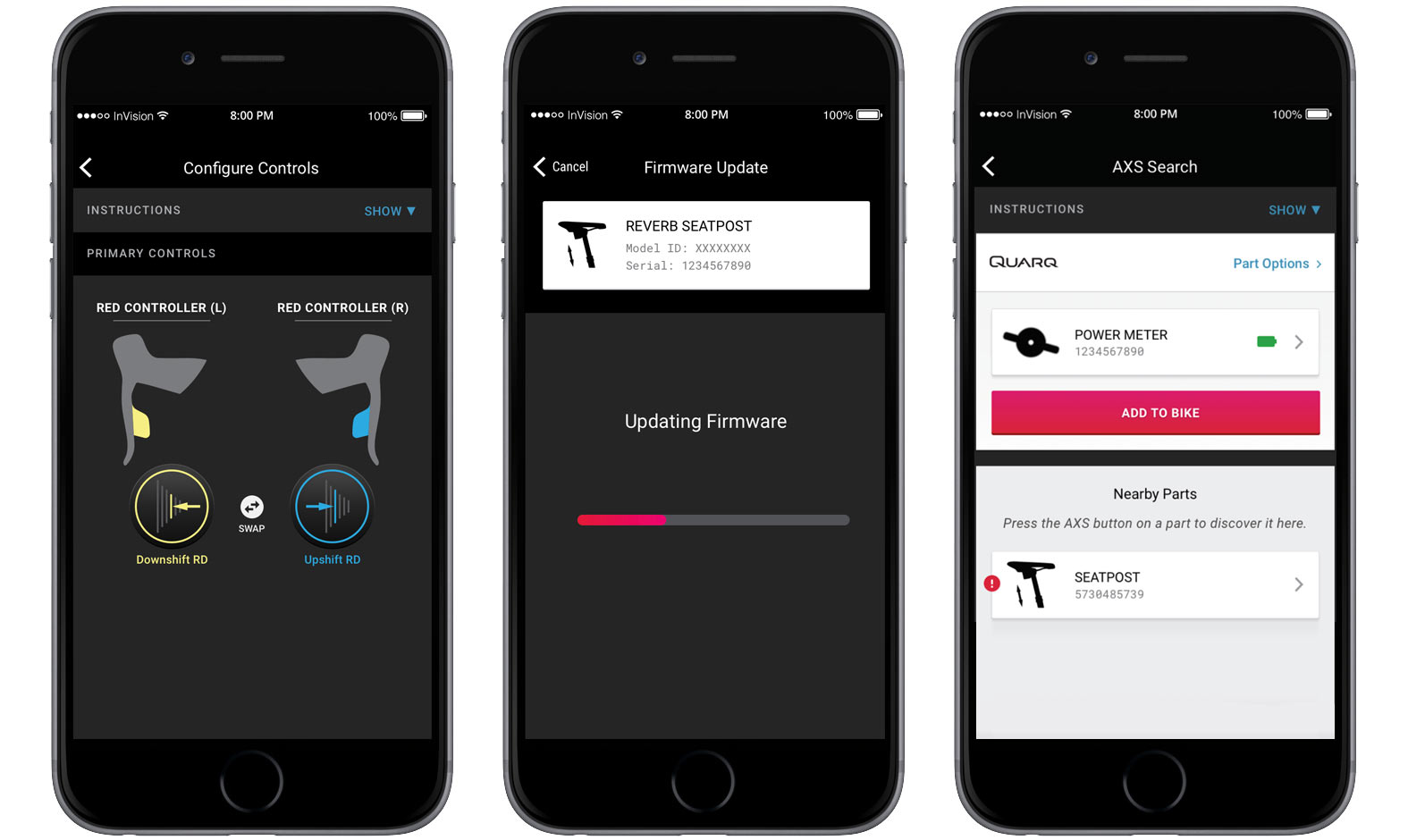
When you set it up, you create a distinct profile for your bike and its AXS components. So, if you have more than one bike with AXS parts, you can easily know which bike you’re adjusting because there’s a visual distinction between them.
And to set up your bike with the app to begin with, you need to be in physical proximity of the bike so you can press the AXS button on the rear derailleur or the dropper. That ensures that only you have control over your components. Which means someone else with the app can’t just connect in the pits and screw up your settings right before a race. Only one device (phone, tablet, etc.) can be connected at a time, too. There are also no shift buttons in the app, so even if someone did sneakily connect to your bike when you’re not looking, they could mess with your settings, but they wouldn’t be able to shift your bike for you.
If you have the Quarq power meter and have been using the Qalvin app, this will have those same functionalities so you can do all your power meter stuff from the AXS app. Their TireWiz and ShockWiz stuff will likely be added, too, with some but not all functions in there at launch. Check back in April.
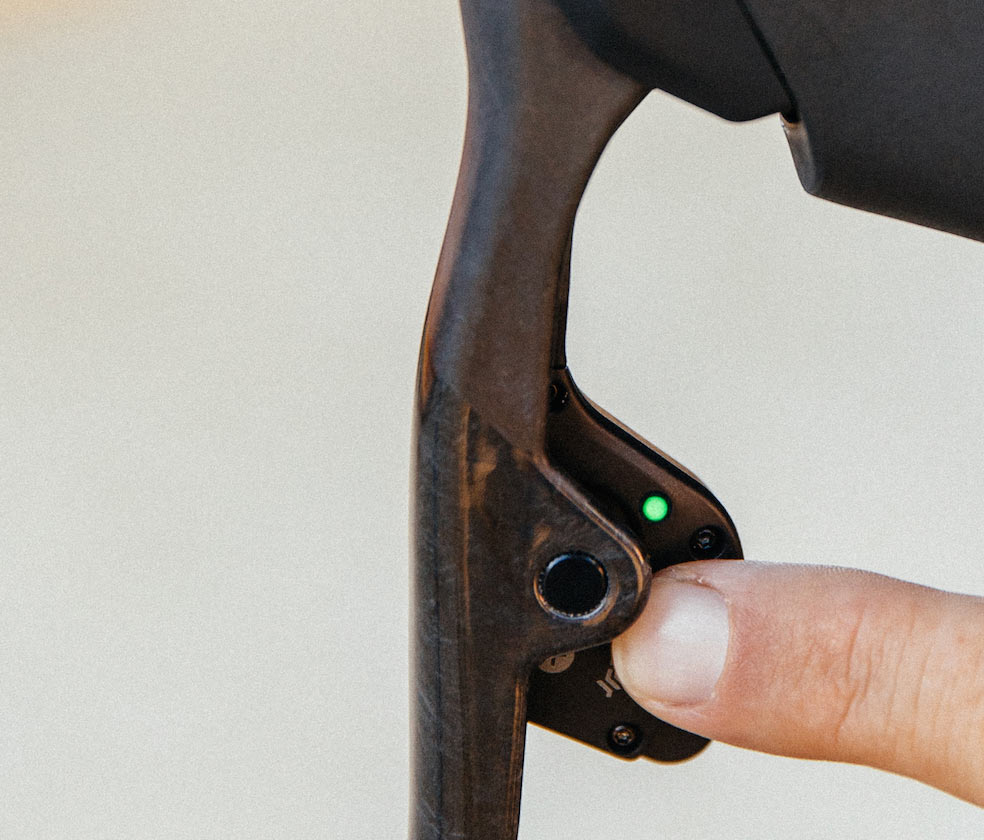
What else is coming?
At launch, there will be no push notifications coming from the app, but that’ll likely change. They didn’t want to launch with any service notifications or anything else that would annoy you to the point where you’re turn it off. Once they have it fully refined, you’ll probably see something come around to alert you to system updates (the app can push firmware updates to the components) and service reminders.
While it’s not really capturing ride data now, it likely will soon enough. Things like attaching tire pressure, gear selection, gear use, power, and more could all be compiled and related to provide a picture of how you’re using your bike. We can see a lot of coaching applications for such data, helping people to learn where they’re most efficient in the gear and cadence range.
Whatever comes, it’s clear that AXS connected components are their platform for the future on road, gravel and mountain. Now, let’s talk components and groups. We’ve created a dedicated tech post for each group and major part, plus ride reviews. Here’s links to everything you need to know about SRAM RED eTap AXS for road, and the all-new SRAM Eagle AXS and Reverb AXS for mountain bikes:
